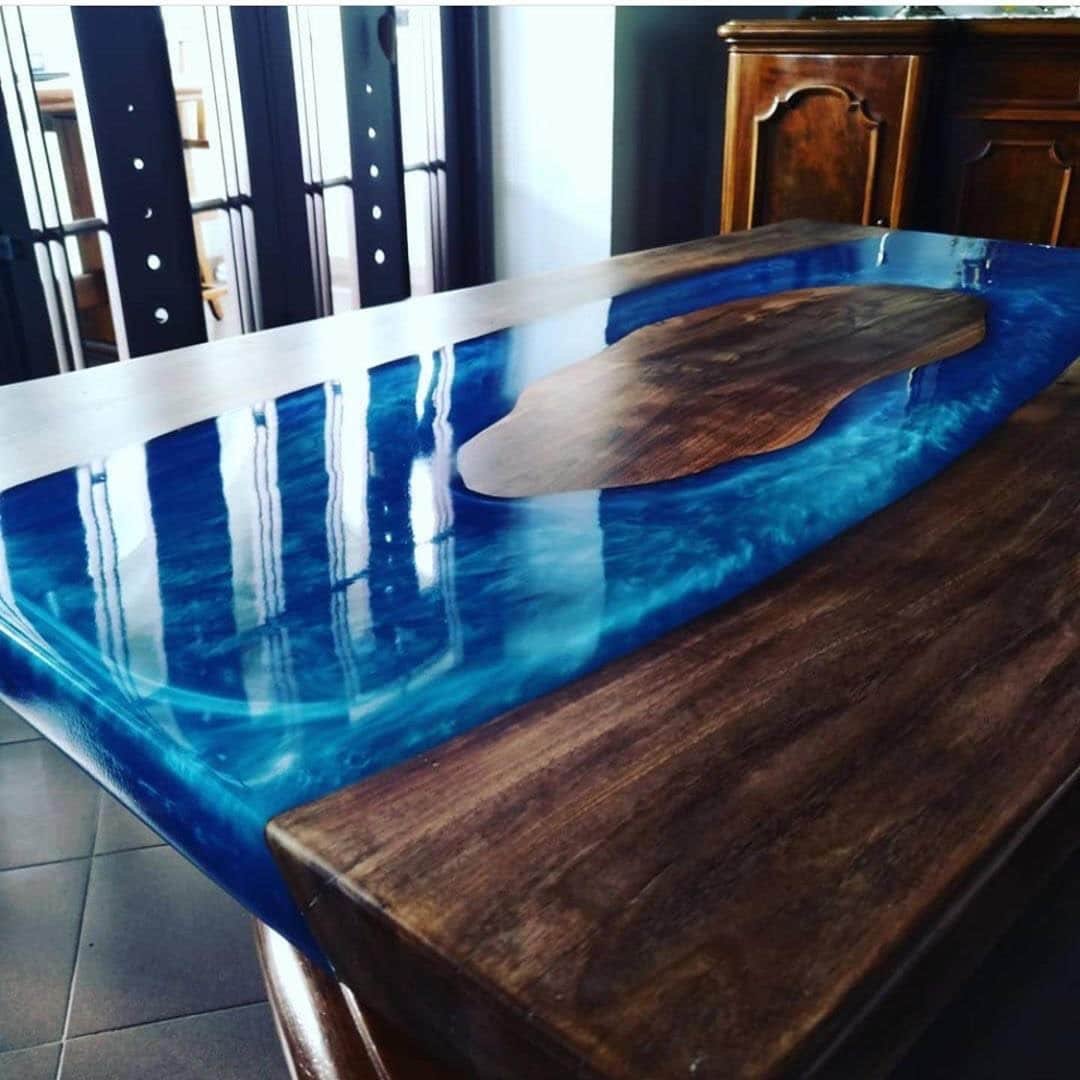Key Takeaways
| Point | Insight |
|---|---|
| Keyword | Epoxy resin for wood is key to durability |
| Strength | Seals surfaces and prevents damage |
| Aesthetic | Adds shine and highlights wood grain |
| Versatility | Works for tables, art, and flooring |
| Protection | Guards against water, heat, and scratches |
Understanding Epoxy Resin for Wood
Epoxy resin for wood is a liquid polymer that cures into a solid, crystal-clear surface. This tough layer bonds tightly with natural hardwoods like oak, maple, or walnut, making it ideal for furniture, flooring, and decorative pieces. Unlike traditional varnishes, epoxy coatings penetrate deeper and form a protective shield that resists scratches, water, and stains.
When applied, the resin flows smoothly across the surface, filling cracks and sealing pores. After curing, it leaves a glass-like finish that enhances the beauty of the wood grain. This is why carpenters, woodworkers, and DIY enthusiasts favor epoxy for both small crafts and large projects.
| Feature | Benefit |
|---|---|
| Durability | Strong resistance to scratches |
| Shine | Glossy, glass-like finish |
| Seal | Blocks water and air |
| Versatility | Works on multiple wood types |
- Epoxy resin bonds well with porous wood fibers.
- It adds strength without hiding natural textures.
- It is widely used in both home décor and industrial design.
Benefits of Using Epoxy on Wood
The biggest reason people choose epoxy resin for wood is protection. It acts as a waterproof shield, which makes wooden tables and countertops last much longer. Unlike oils that need reapplication, epoxy cures into a permanent surface that does not wear away easily.
A second benefit is appearance. Epoxy magnifies the natural details of wood patterns. Even aged planks gain new life with a glossy coat. For creative projects like river tables, epoxy allows embedding of stones, shells, or pigments that turn a plain surface into art.
| Benefit | Explanation |
|---|---|
| Protection | Prevents swelling and cracking |
| Aesthetic | Enhances natural color |
| Longevity | Extends lifespan of furniture |
| Creativity | Allows artistic inlays |
- Ideal for bar tops and kitchen counters.
- Used by artists to embed colors or 3D effects.
- Works well for both indoor and outdoor wood.
Common Applications in Woodworking
From household projects to professional builds, epoxy resin for wood fits into nearly every type of woodworking. For instance, furniture makers use it to repair cracks in antique wood. Floor installers apply epoxy for seamless, durable finishes. Artists pour it into molds for unique sculptures and coasters.
The resin also creates the famous river table design, where colored epoxy flows between two wooden slabs. These projects showcase how epoxy combines science and art in modern woodworking.
| Application | Example |
|---|---|
| Furniture | Tables, chairs, countertops |
| Art | Resin rivers, coasters |
| Flooring | Seamless finishes |
| Repairs | Filling cracks and gaps |
- Epoxy allows artistic creativity with wood.
- Perfect for custom home décor items.
- Common in both residential and commercial projects.
How to Apply Epoxy Resin on Wood
Applying epoxy resin for wood takes patience but not advanced skill. The process starts with sanding the wood surface until it is smooth and dust-free. Next, the resin is mixed with its hardener in precise ratios. Once stirred, it begins curing, so quick and even application is important.
The liquid should be poured slowly, spreading with a brush or spatula to cover the entire surface. During curing, bubbles may appear, which are removed with a heat gun or torch. After full curing, the surface becomes solid, glossy, and ready for use.
| Step | Action |
|---|---|
| Preparation | Sand and clean the surface |
| Mixing | Combine resin and hardener |
| Pouring | Spread evenly across wood |
| Curing | Allow 24–48 hours to harden |
- Safety gear like gloves and masks are essential.
- Proper ventilation prevents inhaling fumes.
- Follow exact ratios for strong results.
Challenges and Limitations
While epoxy resin for wood is versatile, it is not without drawbacks. Incorrect mixing ratios may lead to soft or sticky surfaces that never fully cure. High humidity can cause cloudiness, known as blush. Additionally, epoxy is sensitive to UV rays, which can cause yellowing if not sealed with a protective topcoat.
Another challenge is cost. High-quality epoxy can be expensive, especially for large furniture projects. Mistakes during application also waste material, which adds to the price. Still, for many, the durability and beauty make epoxy worth the investment.
| Limitation | Effect |
|---|---|
| Cost | Expensive for large projects |
| UV Sensitivity | Causes yellowing outdoors |
| Mixing Errors | Soft or uncured surfaces |
| Humidity | Leads to cloudiness |
- Requires careful mixing and timing.
- UV sealers are needed for outdoor use.
- Not ideal for people sensitive to strong odors.
Why Epoxy Resin Matters in Modern Woodworking
Epoxy resin for wood has changed the woodworking industry. In the past, finishes like varnish or shellac offered beauty but lacked the toughness needed for heavy use. Epoxy now bridges that gap, giving wood furniture, flooring, and décor both strength and elegance.
Its ability to blend function with creativity makes it a go-to choice for professionals and hobbyists alike. Whether repairing a cracked heirloom or creating a bold centerpiece table, epoxy ensures the result is both durable and stunning.
| Reason | Impact |
|---|---|
| Durability | Long-lasting furniture |
| Versatility | Works on art and flooring |
| Aesthetic | Elevates design |
| Popularity | Growing trend in woodworking |
- Combines science and art in design.
- Makes wood projects last for decades.
- Bridges traditional craft with modern innovation.
Final Thoughts: Building with Epoxy
When it comes to woodworking, epoxy resin for wood is more than just a finish. It is a tool that protects, beautifies, and transforms. From sealing delicate grain to crafting bold designs, it gives wood both longevity and personality.
For homeowners, it means sturdy countertops and eye-catching tables. For artisans, it opens endless creative doors. With its durability and shine, epoxy has become a cornerstone of modern woodworking, proving that a little chemistry can bring out the best in nature’s oldest building material.
| Conclusion | Key Point |
|---|---|
| Strength | Epoxy makes wood stronger |
| Beauty | Highlights natural patterns |
| Protection | Shields against damage |
| Creativity | Encourages unique designs |
- Epoxy resin for wood ensures lasting quality.
- It blends durability with artistic style.
- For anyone working with wood, it’s a must-have finish.
Checkout KBM Rankings




